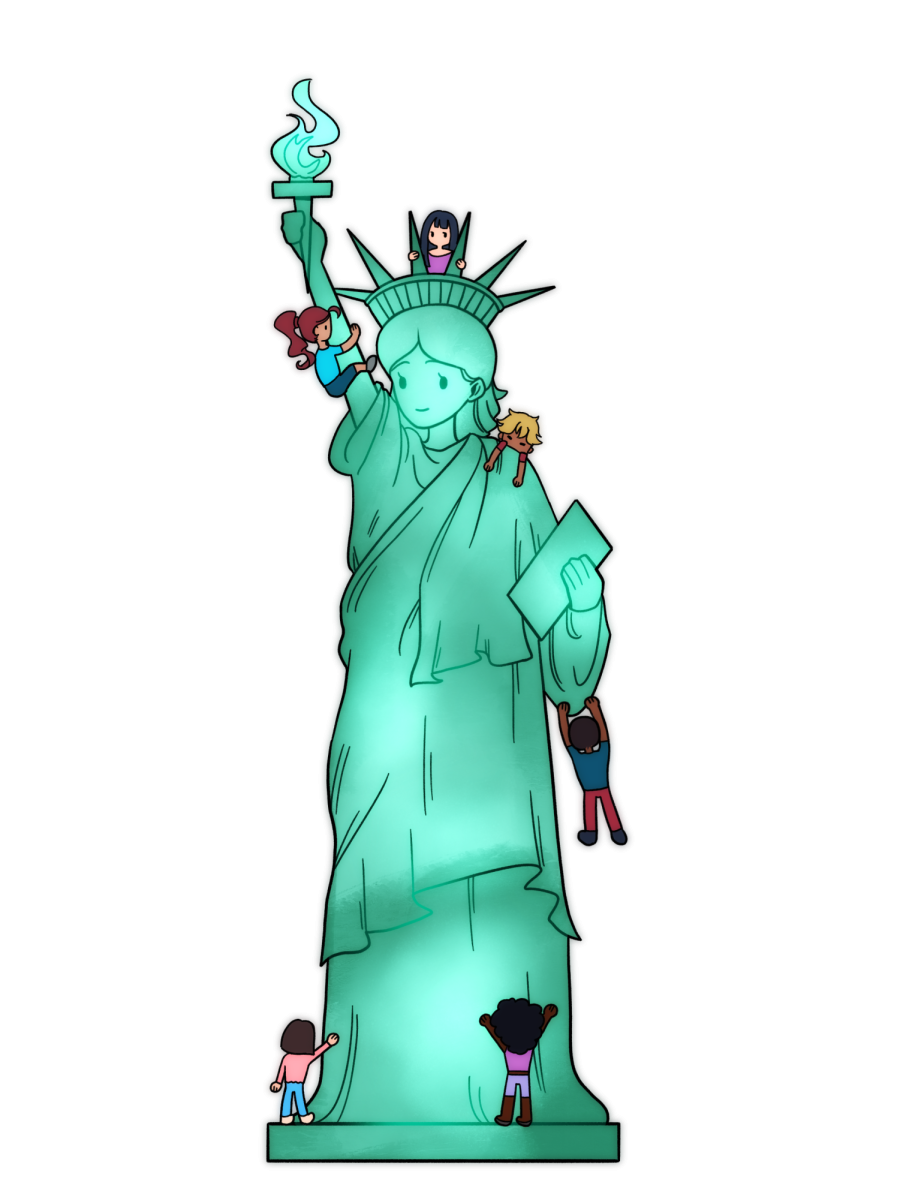Photos of the far-reaching Montana countryside flash across junior Kasmira Lada’s TV screen, lighting up her room with images of smiling children, snow-covered mountains and grandiose blue skies.
Less than 30 seconds later, the scenery is suddenly replaced by white, with the distinctive, triangular Airbnb logo glowing in the center.
Despite interrupting her viewing of “Gilmore Girls” on Netflix, the Airbnb advertisement caught Lada’s attention with its impactful visuals and music.
“Good ads create a personality for the company,” Lada said. “It makes the company seem like it isn’t just trying to make a profit off of the viewers, but it shows that they care about you having good experiences as if it’s in my best interest to use these companies.”
And Ajay Gandhi, Executive Vice President of Marketing at Insight Partners, a global venture capital and private equity firm, said portraying emotions in advertisements is crucial for companies to stand out to consumers.
“One of the ways to really connect with your customer is striking emotional feelings in you when you interact with my company,” Gandhi said. “Let’s look at Apple as an example –– it’s a very well-marketed company. When you see an Apple ad, there’s a certain feeling you get. It’s usually very visual, and it catches your eye, whether it’s an ad on a billboard, something showing up in your Facebook feed or a Google ad on a web page that you’re visiting.”
Behind the scenes, Xinyu Li, a user experience designer at Google, said many Google products function as platforms to facilitate the exchange of content between publishers, consumers and advertisers.
“On the consumer side, we think about how the ads should look or how someone would skip the YouTube ads,” Li said. “On the advertiser side, we help advertisers create advertising campaigns. On the publisher side, we can help publishers identify the most valuable advertising styles on our website.”
Because of the abundance of content on social media, Gandhi said advertisers are able to push out targeted content quickly and at a deliberate time.
“The most important thing is that (advertisements) are relevant to you when you come across it,” Gandhi said. “Companies have to make what they do relevant, so that means the right piece of imagery, the right content at the right time, in front of the right consumer.”
Even for background design elements, such as those in a webpage, Li said consumers are taken into consideration when developing products.
“When we first start our user research, we partner with the researchers on our team, and they could be doing interviews with their users or they could be digging up data,” Li said. “From that, we’ll have a good idea of how we might improve or what products we want to build. And then, we partner them with our product managers and engineers to have a product that serves those needs.”
Apple Creative Director Caio Lazzuri said many companies use simpler aesthetics to appeal to a large, diverse audience.
“Ease of use is perhaps what motivates simplification,” Lazzuri said. “Over time a simpler, flatter, more iconic look emerged. A simpler look often has a longer shelf-life than something too ornate, which can quickly become dated.”
Gandhi said simplifying products helps consumers identify the purpose and message of an advertisement.
“If you’re a software company trying to market to your customers, there is a move to try to simplify to make it very clear,” Gandhi said. “Color needs to also be simplified and clean so that everyone can, at a glance, understand your story that you’re trying to tell them.”
To ensure such a diverse consumer base is accounted for, Li said Google products also go through multiple stages to eliminate blind spots.
“We want to make sure that every user group has their fair representation, which also includes people who are traditionally not recruited for user study,” Li said. “We want to make sure that our colors and contrasts are still strong for people who have vision disabilities.”
Color is not only used to create accessible designs but also to elicit emotional responses from consumers, which Gandhi said is a way for companies to appeal to customers.
“Everyone will first notice color, usually even before text,” Gandhi said. “There are different colors that can evoke different feelings in people. Your iPhone is designed to say, ‘This is a space age. This is something cool like a futuristic object.’ Versus the Target sym2bol (which) is a bullseye. It’s like, ‘We have what you need. We have everything for your home,’ but it’s meant to be a different emotion.”
Lazzuri, who creates Apple’s event films — long-form videos streamed internationally for product announcements — said color is a crucial component of the films.
“Color conveys emotion both in design and in film and is a very powerful tool when communicating with our audience,” Lazzuri said. “A beautiful product shot against a white background is often what people may think of when they think of Apple. But some products like (the) MacBook Pro or iPhone Pro look killer against black.”
Lada said while some of the Apple advertisements are not particularly impactful, she said the use of different design elements is very eye-catching, especially when combined with Apple’s recognizable minimalistic design.
“The way music and color is presented catches your eye, and you associate that object and that ad with something good which gets you emotionally connected,” Lada said. “And with minimalism, you’ll remember it in your brain, you’ll think about it a lot and maybe you’ll want to use it.”
And Gandhi said making sure advertisements are attention-grabbing in the first few seconds of being seen is crucial to boosting consumer engagement due to the rise in popularity of short-form content.
“You only have a couple of seconds to get someone’s attention, so the color, the sound, everything has to work together quickly to get your attention,” Gandhi said. “People are looking to make bold statements, so they will use either very unique colors to be really bold or colors that reflect their identity like Apple or Target or well-known companies like McDonald’s.”
Especially with the increase in digital media through AI content creation, Gandhi said it is difficult for consumers to decide what is worth watching, but as technology evolves, advertising will become much more personalized.
“Marketing is going through a big change right now,” Gandhi said. “We’re all so overwhelmed with stuff in digital channels, and there’s going to be a huge wave of AI helping us go through things and figure things out for us as consumers. Right now, the social media companies tune (the algorithm) to make advertising revenue, so it’d be nice if we could have the technology for each of us to say, ‘This represents me and go get me things I’m interested in.’ I think that’s really the future.”









